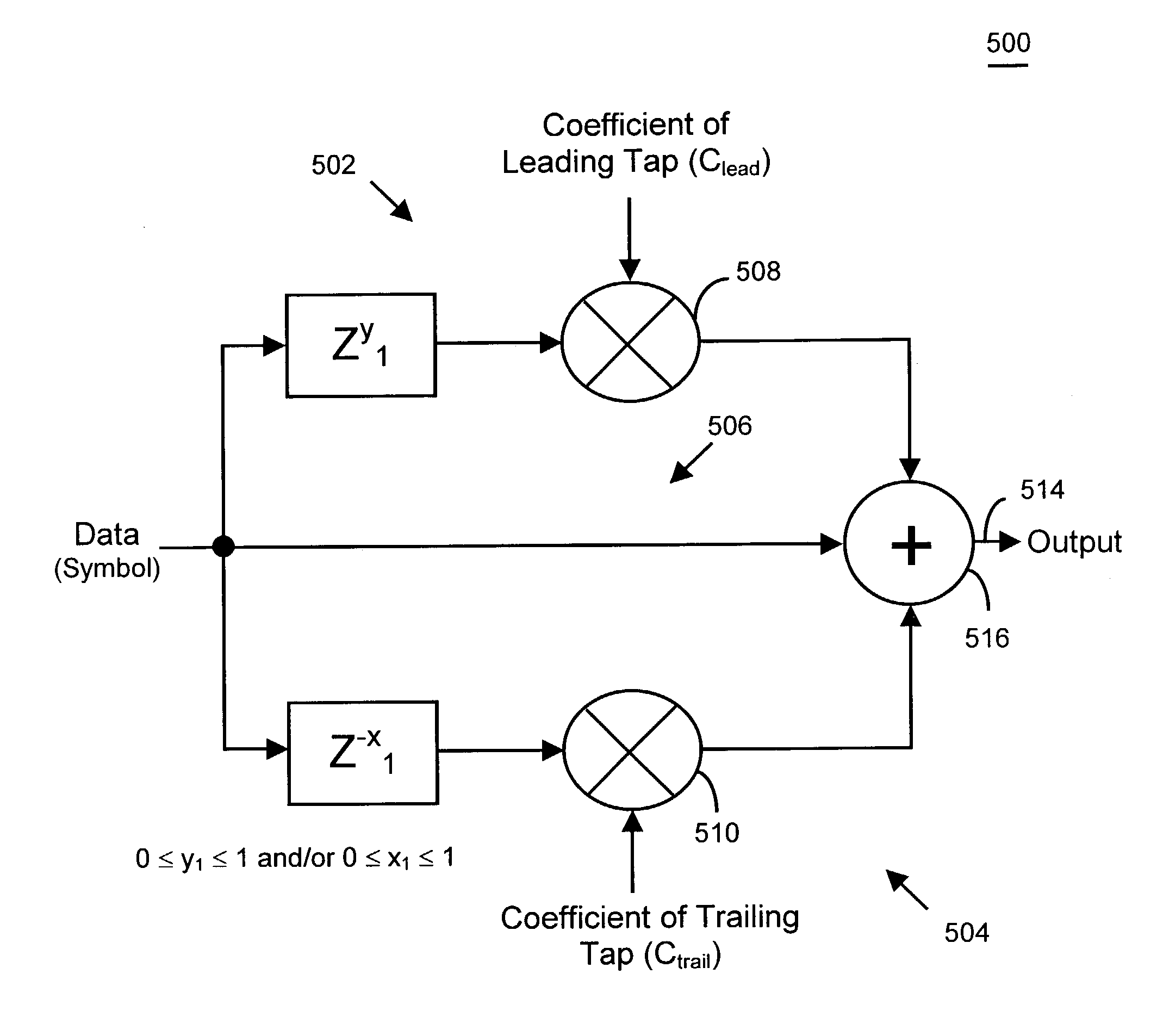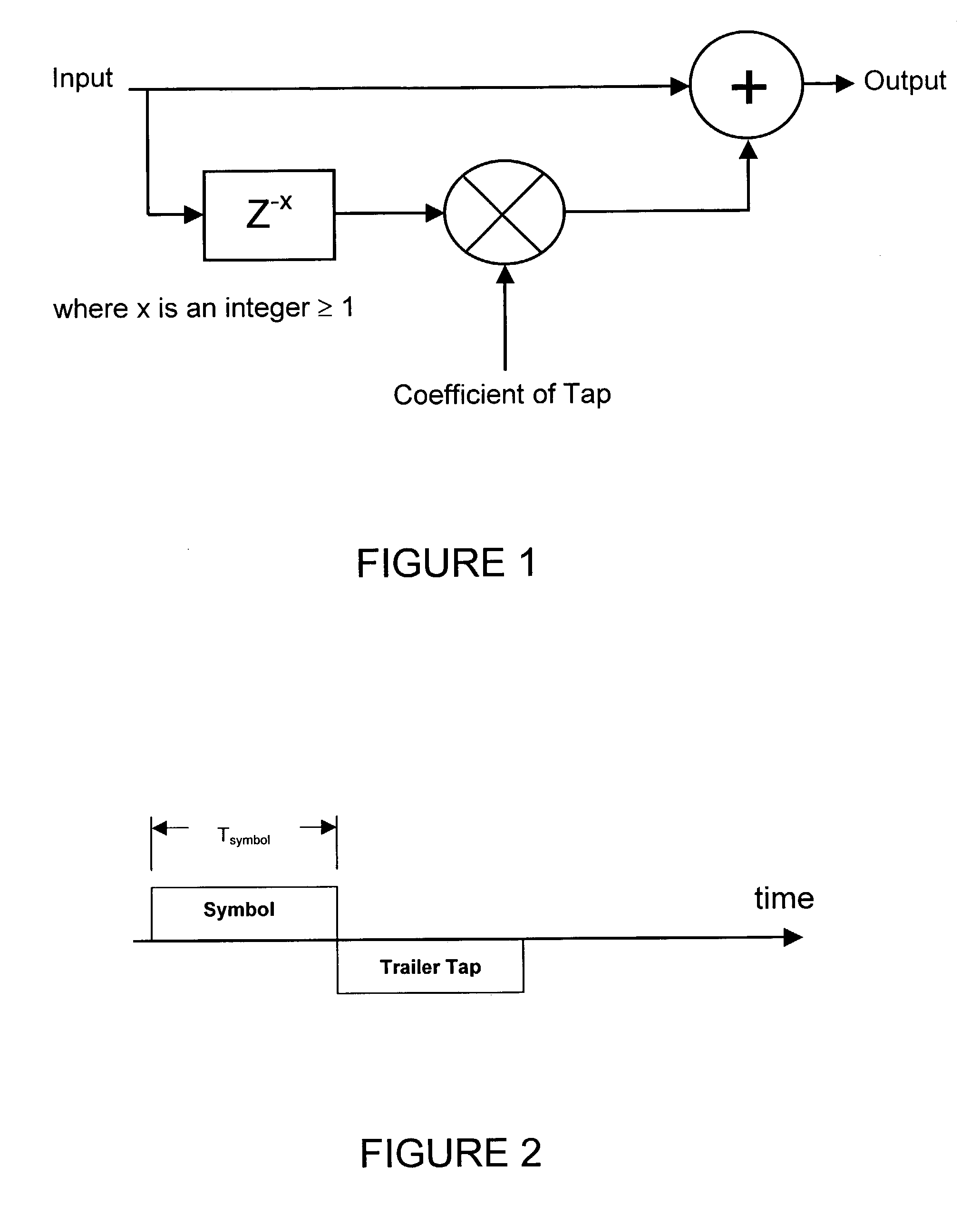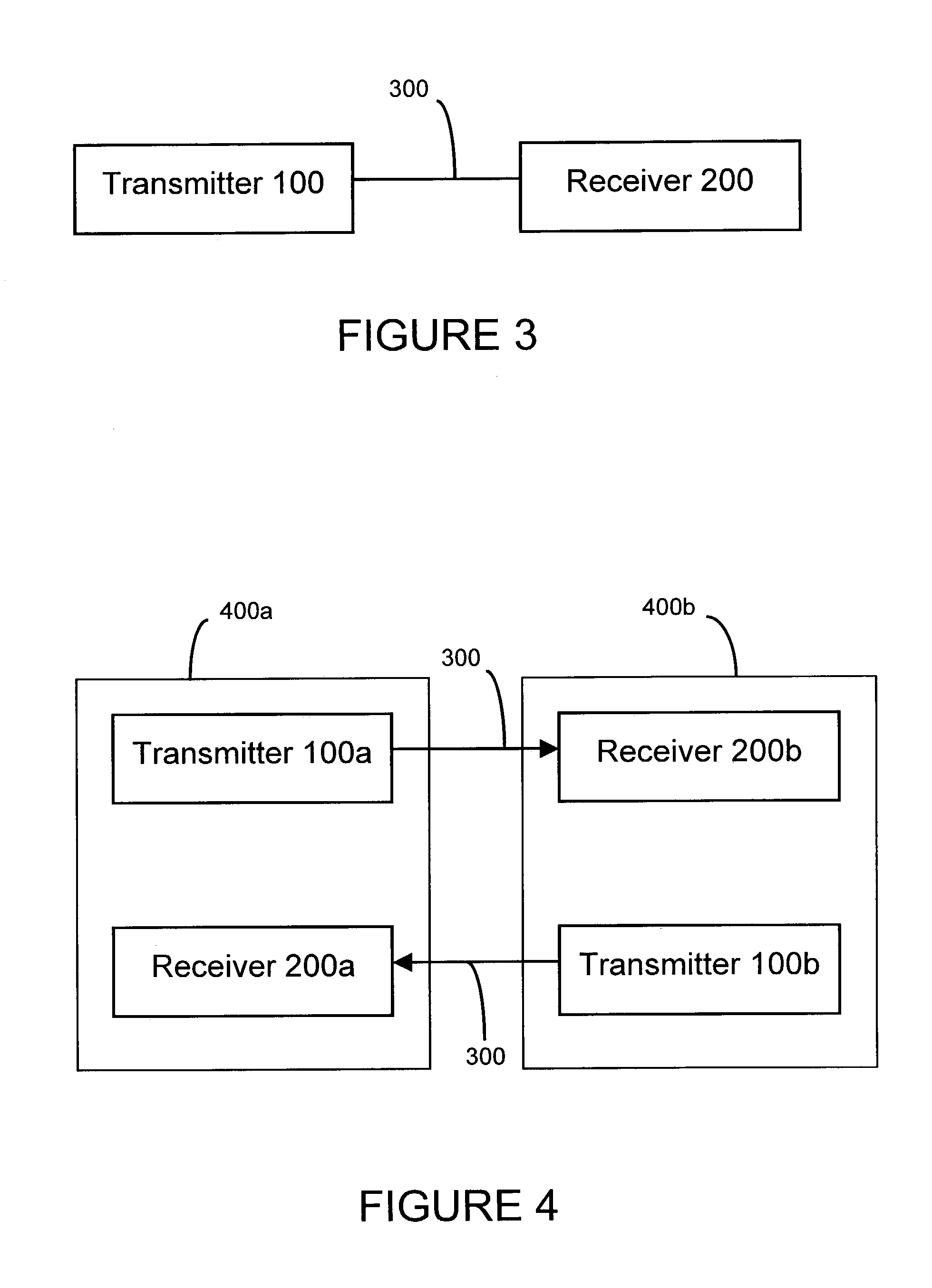System and method of equalization of high speed signals
- Summary
- Abstract
- Description
- Claims
- Application Information
AI Technical Summary
Benefits of technology
Problems solved by technology
Method used
Image
Examples
Embodiment Construction
[0042]The present invention is directed to a technique of, and system for enhancing the performance of high-speed digital communications through a communications channel, for example a backplane. In one embodiment of the present invention, a transmitter includes equalization circuitry and techniques to compensate for bandwidth limitations and reflections in high-speed digital communication systems. The circuitry and techniques of this embodiment is designed, programmed and / or configured to introduce intersymbol interference in order to improve the signal integrity in high-speed communications and enhance the operation and performance of such systems. The circuitry and techniques include leading and / or trailing taps to reduce, minimize, mitigate or effectively eliminate precursor and / or post-cursor intersymbol interference due to, for example, bandwidth limitations and reflections in high-speed digital communication systems. In this way, the equalization circuitry and techniques may ...
PUM
 Login to view more
Login to view more Abstract
Description
Claims
Application Information
 Login to view more
Login to view more - R&D Engineer
- R&D Manager
- IP Professional
- Industry Leading Data Capabilities
- Powerful AI technology
- Patent DNA Extraction
Browse by: Latest US Patents, China's latest patents, Technical Efficacy Thesaurus, Application Domain, Technology Topic.
© 2024 PatSnap. All rights reserved.Legal|Privacy policy|Modern Slavery Act Transparency Statement|Sitemap



